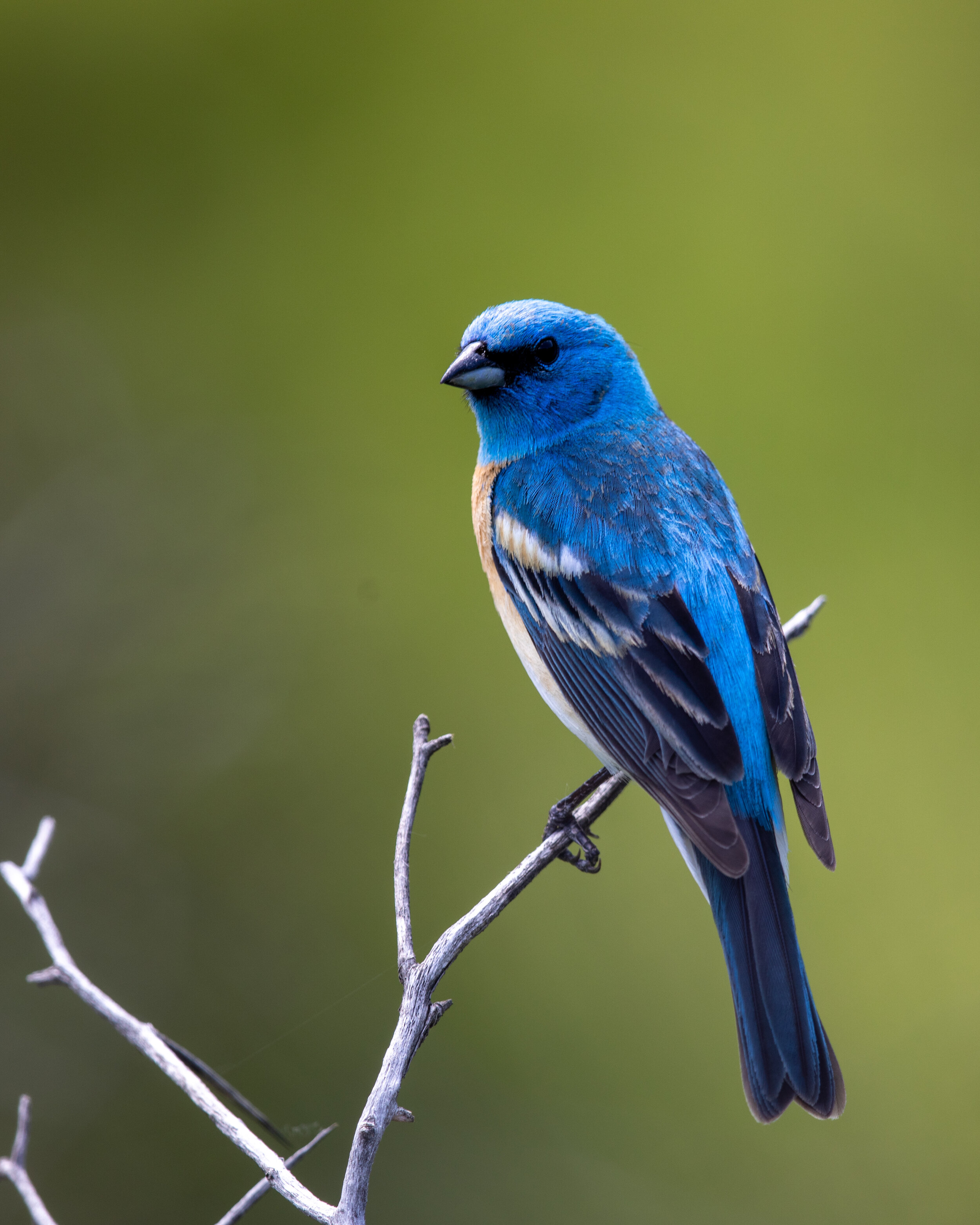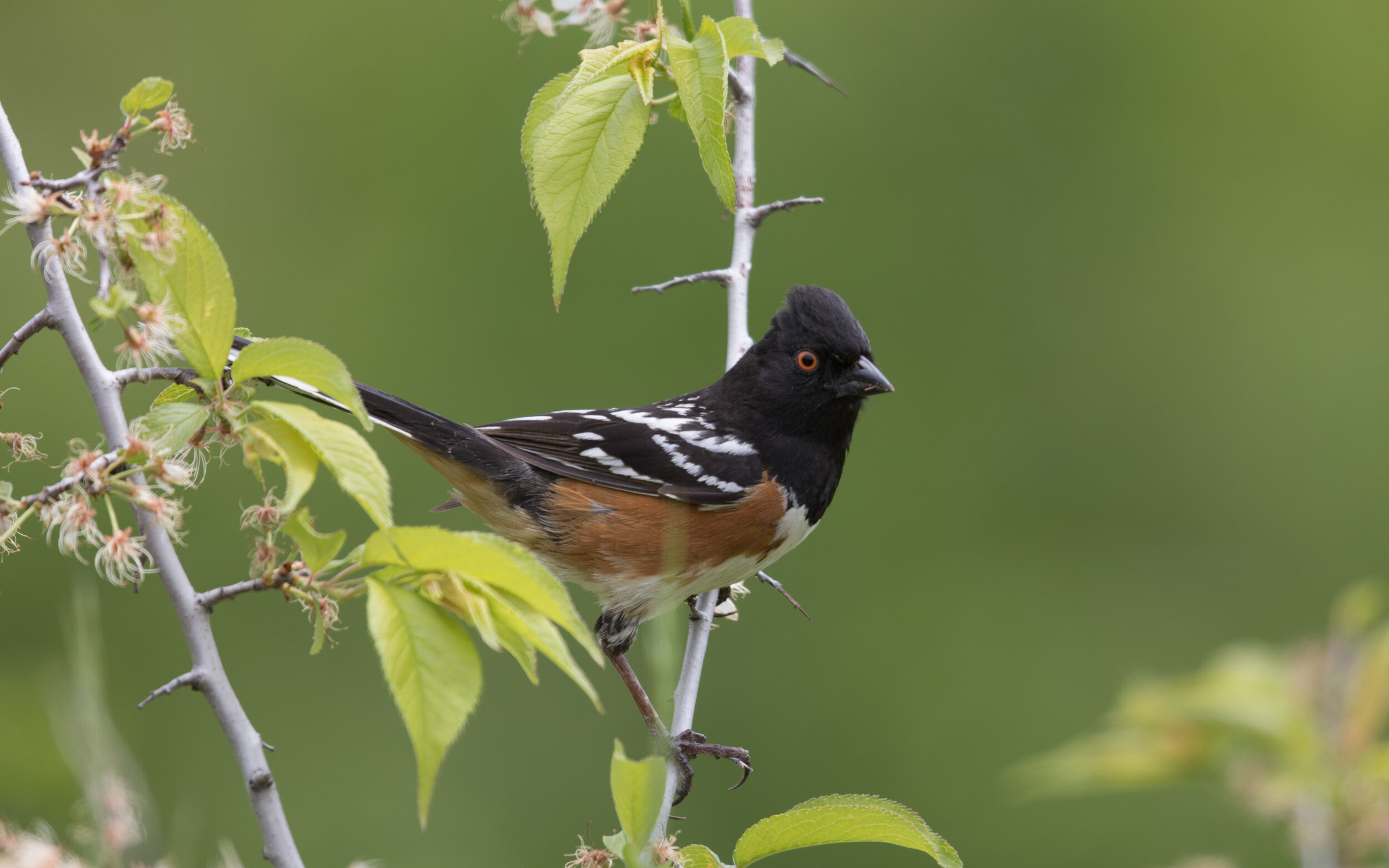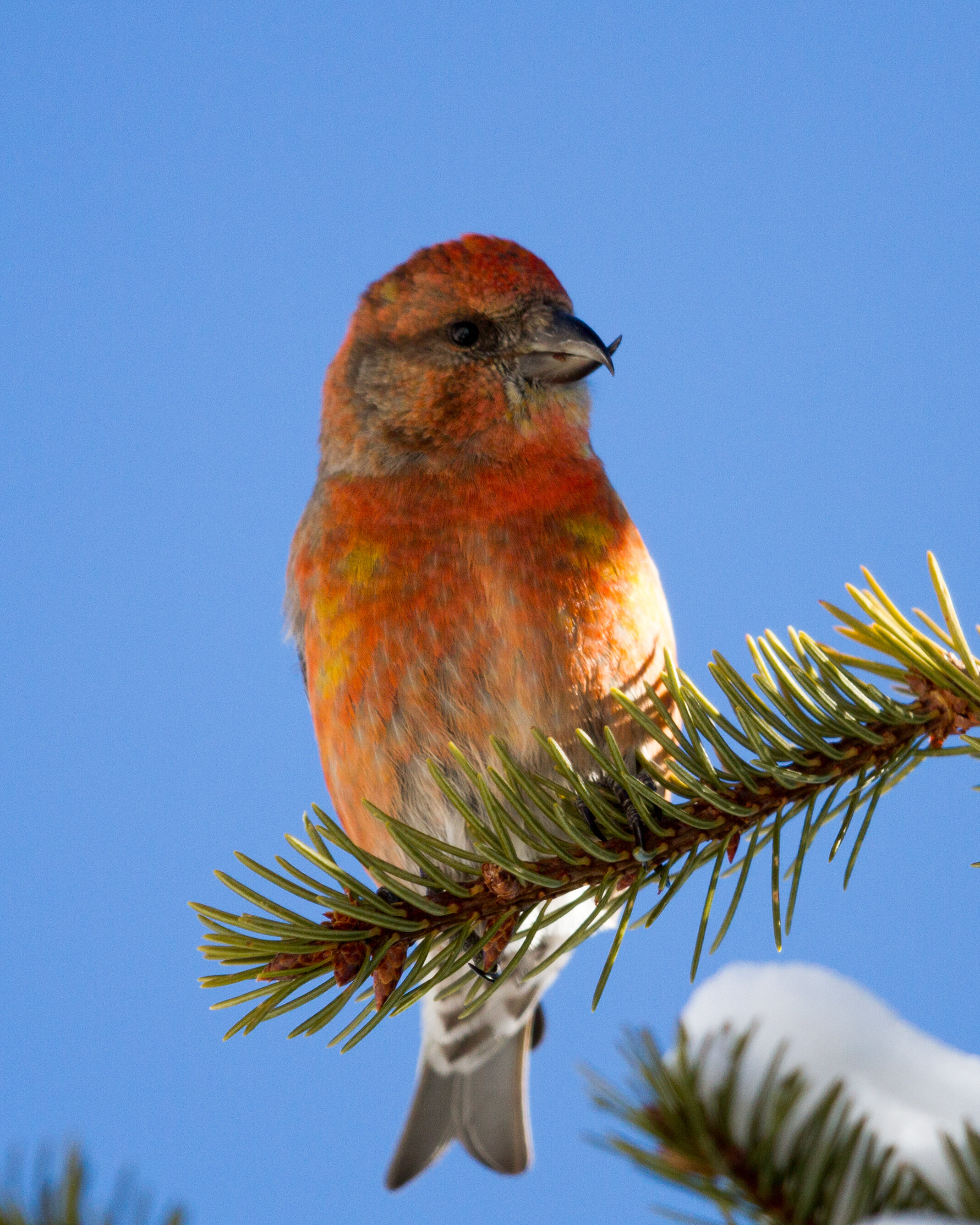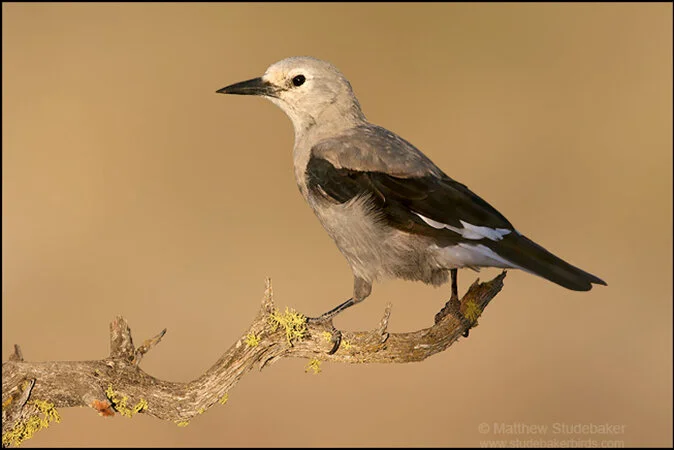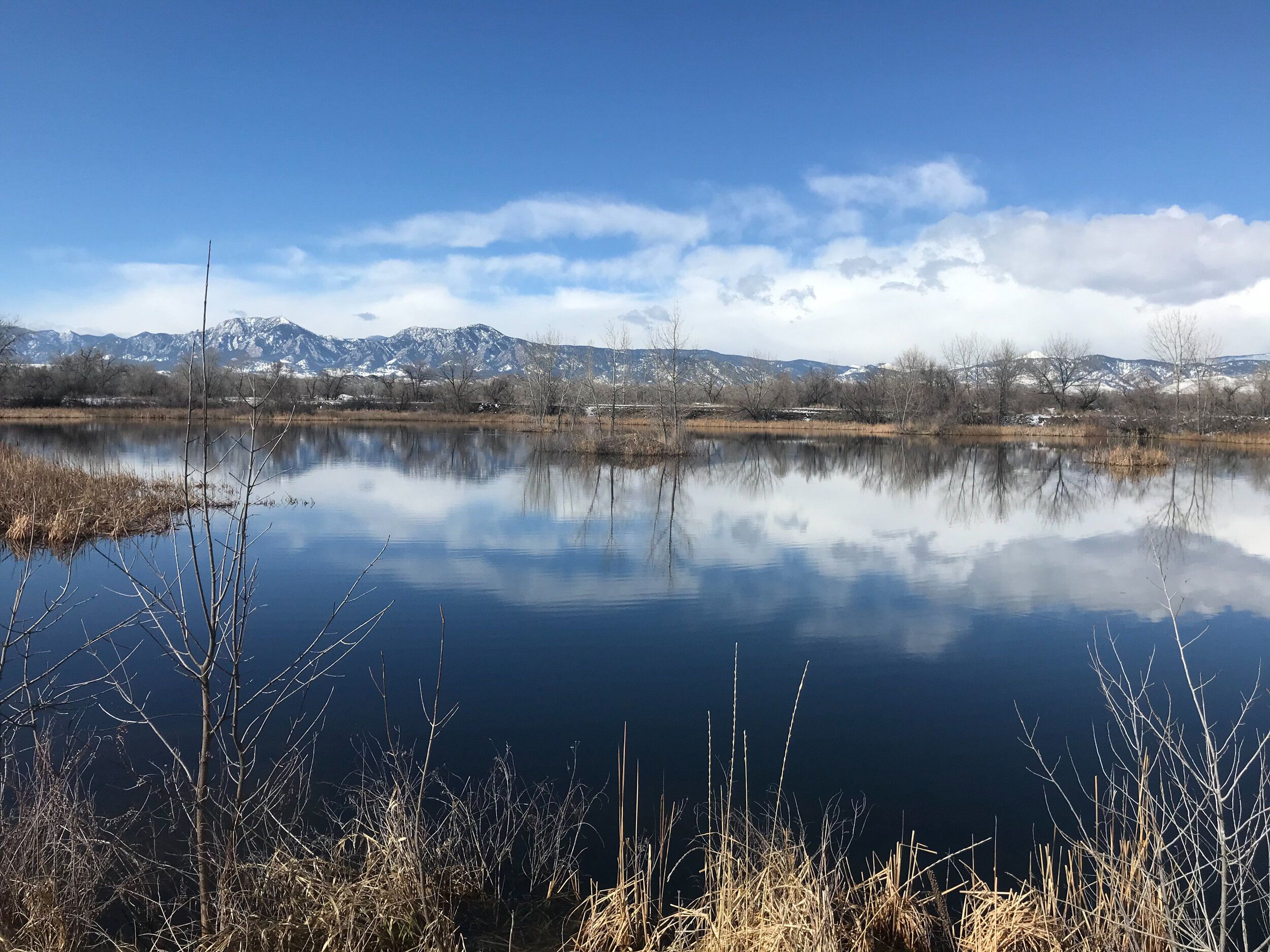
Go Birding Locally
Nearly half of Boulder County is public land, so there are literally hundreds of trails available to birdwatchers, from the plains to the Continental Divide. Here are a few of our favorite local and regional birdwatching destinations.
For a comprehensive list of wheelchair-accessible trails, visit Trails Accessibility Guide. For finding trails, we recommend the Boulder Open Space and Mountain Parks trail map (available online or at their offices at Chautauqua Park and 2520 55th Street).
Plains Destinations
Sawhill and Walden Ponds Wildlife Areas
American White Pelican
City of Boulder Open Space and Mountain Parks (Sawhill) and Boulder County Parks and Open Space (Walden, Wheelchair Accessible)
Directions: From 75th and Valmont, go north 0.5 miles and turn left at the Sawhill Ponds sign. The Walden (Cottonwood Marsh) entrance is 0.5 miles north of the Sawhill entrance.
Attractions: These reclaimed gravel pits along Boulder Creek support waterfowl, marsh-nesting species, and birds of cottonwood-willow river bottoms. Summer residents include American Bittern, Cinnamon Teal, Bald Eagle, Spotted Sandpiper, Virginia Rail, Sora, Eastern Screech-Owl, Bank Swallow, and Yellow-headed Blackbird. This is the only known Colorado nesting location for Least Bittern. As many as 75 species have been observed on an early May morning.
Rarities: Green Heron, Black-necked Stilt, Marbled Godwit, Red-necked Phalarope, Bonaparte’s Gull, Caspian Tern, Barn Owl, Long-eared Owl.
Teller Farms
Yellow-headed Blackbirds can regularly be seen during the breeding season at Teller Lake #5, adjacent to the North Teller Farms trailhead.
Boulder Open Space and Mountain Parks (Wheelchair Accessible - some parts)
Directions:
South Trailhead: From Boulder, 2 miles east of 75th on Arapahoe Road. Entrance is on north side of Arapahoe. A 0.2-mile dirt road leads to ample parking lot and trailhead.
North Trailhead: 2 miles east of 75th on Valmont Road. Entrance and parking lot and trailhead are on the south side of Valmont Rd.
Attractions: This old pastureland next to a working farm hosts a rich variety of birds that have been spotted in the cover of century-old cottonwoods, in the riparian area running through the middle of the land, on a small pond near the south parking lot, and on a small lake with an observation deck. The dirt/gravel trail that runs the full length of the property, north and south, is flat, wheelchair accessible (when not muddy), and is popular with runners, dog-walkers and birders during all seasons.
Rarities: Snow Goose, Dickcissel, Bobolink (nesting).
Foothills Destinations
Doudy Draw
Lazuli Bunting male.
Boulder Open Space and Mountain Parks (Wheelchair Accessible)
From State Highway 93 one mile south of Boulder, turn west on Eldorado Springs Drive. After 2 miles, turn left into the fenced parking area.
Attractions: Foothills shrub vegetation and willows attract flycatchers, warblers, and sparrows. A paved trail goes a half-mile up the draw to a shaded picnic area. An unpaved trail continues for another mile, eventually connecting to the Flatirons Vista trail to the southwest. Since the draw faces north, fall migrants, including Sage Thrashers and Pinyon Jays, may linger here. Gray Catbirds, Cedar Waxwings, Yellow-breasted Chats, Lazuli Buntings, Blue Grosbeaks, and Grasshopper Sparrows all nest in Doudy Draw.
Rarities: Flammulated Owl, Lewis’s Woodpecker, Eastern Bluebird, Northern Mockingbird.
Spotted Towhee
Shadow Canyon
Boulder Open Space and Mountain Parks
Directions: From State Highway 93 one mile south of Boulder, go west 2 miles on Eldorado Springs Drive, and park on the right at the South Mesa Trail trailhead. Hike north 0.2 miles across the bridge and take the middle trail fork (Towhee Trail) at the Stone House. Continue 1.3 miles up Shadow Canyon.
Attractions: Extensive areas of foothills shrub and ponderosa pine woodland support more than 60 species of nesting birds, including Cooper’s Hawk; Blue-gray Gnatcatcher; Gray Catbird; Virginia’s and MacGillivray’s Warblers; Yellow-breasted Chat; Lazuli Bunting; Blue Grosbeak; and Red Crossbill. Peregrine and Prairie Falcons fly over the canyon from nesting cliffs to the west.
Rarities: Bushtit, Winter Wren, American Redstart, Indigo Bunting.
Common Yellowthroat male
Lower Skunk Canyon
Boulder Open Space and Mountain Parks
Directions: Starting at Baseline and Broadway in South Boulder head south to Dartmouth (0.8 mile). Turn right and continue 0.2 miles to Kohler. Turn left and continue on Kohler for 0.8 mile. Take a right on Deer Valley Road for one block. The trail begins where Deer Valley Road deadends at Hollyberry Lane.
Attractions: Very diverse environment starting with foothill shrublands and continuing on for 1.3 miles through ponderosa pines and Douglas-firs. Golden Eagles, Prairie Falcons, and Peregrine Falcons nest on the Flatirons cliffs at the head of the canyon. Summer residents include Broad-tailed Hummingbird; Woodhouse’s Scrub-Jay, Steller’s Jay; Blue-gray Gnatcatcher; Gray Catbird; Virginia, Yellow-rumped, and MacGillivray’s Warblers; Yellow-breasted Chat; Spotted and Green-tailed Towhees; Lazuli Bunting; and Black-headed Grosbeak. Winter residents include Downy Woodpecker; Red-breasted, Pygmy, and White-breasted Nuthatches; Townsend’s Solitaire; and Dark-eyed Junco.
Rarities: Peregrine Falcon, Northern Mockingbird, Chestnut-sided Warbler, and Indigo Bunting.
Red Crossbill
Meyers Gulch Trail at Walker Ranch
Boulder County Parks and Open Space
Directions: From the west end of Baseline Road in Boulder, continue up Flagstaff Road approximately 7 miles. On the west side of the road, there is a sign for Walker Ranch Open Space Meyers Gulch Trailhead. A picnic shelter and restrooms are adjacent to the upper parking lot.
Attractions: Ponderosa pines and Douglas-firs are interspersed with open meadows and aspen groves. Small streams dissect the hills before joining South Boulder Creek. A 2.5-mile trail starts at the lower parking lot (elevation 7,380 ft.) and continues to an overlook (elevation 8,090 ft.). Habitat diversity and a continuous water source offer the opportunity to observe a variety of birds during migration and the summer breeding season. Common sightings include Wild Turkey, Warbling Vireo, Brown Creeper, Western and Mountain Bluebirds, Vesper Sparrow, Red Crossbill, Empidinax flycatchers, warblers, vireos, nuthatches, and a variety of woodpeckers including Red-naped and Williamson’s Sapsuckers. In mid-summer, look for families of Dusky Grouse feeding in the upper meadows.
Rarities: Northern Pygmy-Owl, Three-toed Woodpecker, Olive-sided Flycatcher, Loggerhead Shrike, Northern Shrike, and Lark Bunting.
Clark’s Nutcracker
Mountain Destinations
Long Lake Willow Carr and Niwot Ridge
Indian Peaks Wilderness - U.S. Forest Service
Directions: From the Peak-to-Peak Highway (SH 72) west of Ward, turn west on CR 102. Drive approximately 6 miles to Brainard Lake and continue around the lake to the Long Lake and Lake Isabelle parking area. From here it is 0.2 miles to Long Lake and 0.5 miles to Niwot Ridge. Be aware: in summer, this parking lot is often full by 8 a.m and there is an entrance fee.
Attractions: The willow thickets (carrs) around the lower end of Long Lake support nesting American Dipper, Swainson’s Thrush, Wilson’s Warbler, and Lincoln’s, White-crowned, and Fox Sparrows. Ring-necked Ducks and Spotted Sandpipers nest around the lake. Clark’s Nutcrackers, Golden-crowned and Ruby-crowned Kinglets, Townsend’s Solitaires, Hermit Thrushes, and Pine Grosbeaks nest in old-growth spruce-fir forests on Niwot Ridge. White-tailed Ptarmigan, American Pipits, and rosy-finches nest above treeline.
Rarities: Boreal Owls have been heard and seen at the Brainard Lake entrance station. White-winged Crossbills have nested at Mitchell Lake.
Wild Basin
Rocky Mountain National Park - National Park Service
Directions: From Allenspark take State Highway 7 two miles north to the Wild Basin Entrance Station to Rocky Mountain National Park. Entrance fee.
Attractions: Copeland Willow Carr, on mostly private land on the left just after you turn into Wild Basin, is the largest and possibly most productive willow carr in the county. Expect to see Spotted Sandpiper, Wilson’s Snipe, American Dipper, Sora, Swainson’s Thrush, Common Yellowthroat, Wilson’s Warbler, and Lincoln’s Sparrow. The 2.7-mile trail to Ouzel Falls meanders through aspen groves and an old burn area where Three-toed Woodpeckers have been seen.
Rarities: Boreal Owl (above 9500 ft.), Three-toed Woodpecker, White-winged Crossbill.
Beyond Boulder County
Thinking of venturing farther afield? You may find these resources useful:
Colorado County Birding from the Colorado Field Ornithologists



